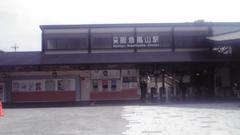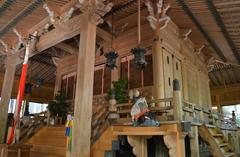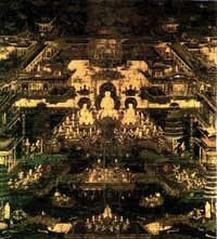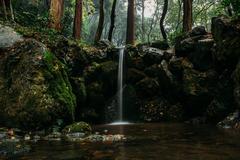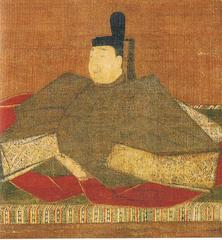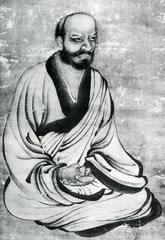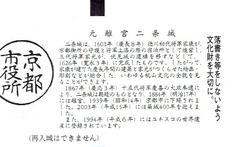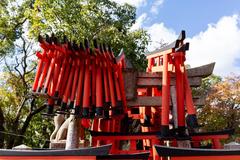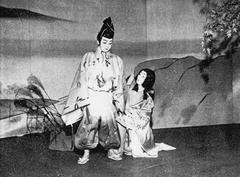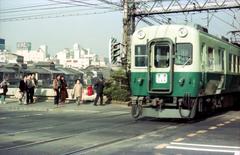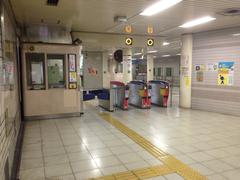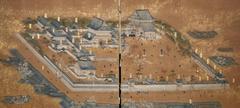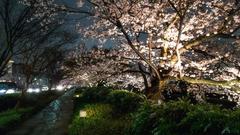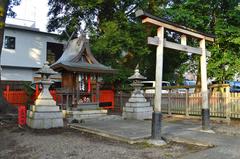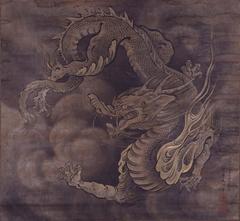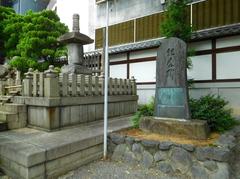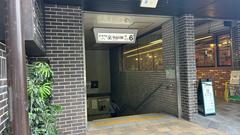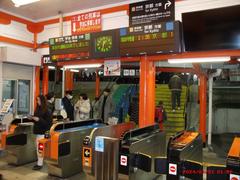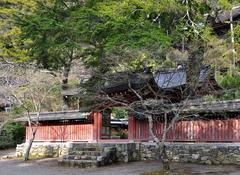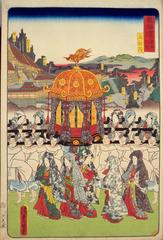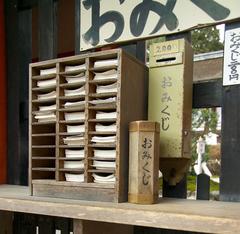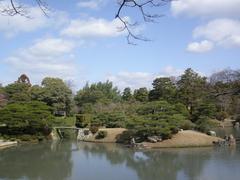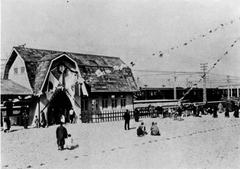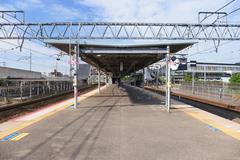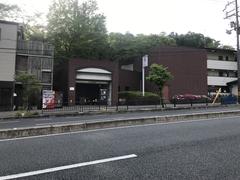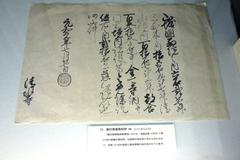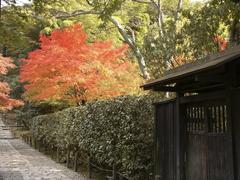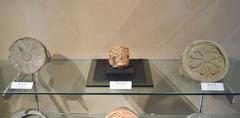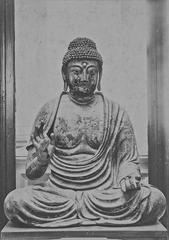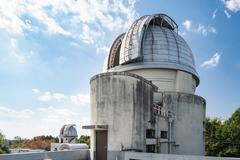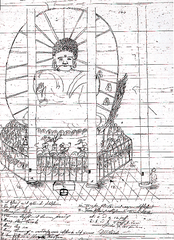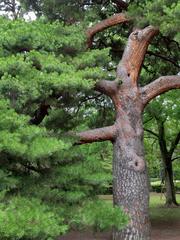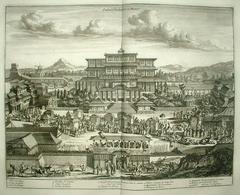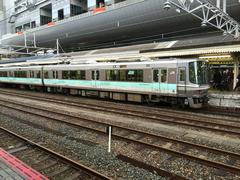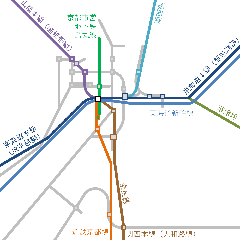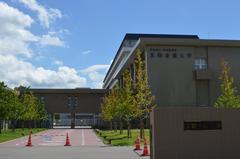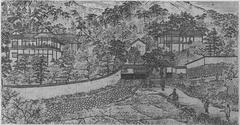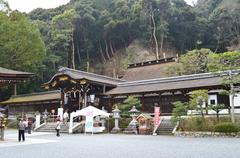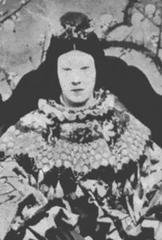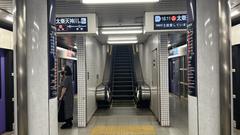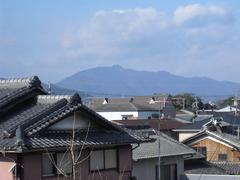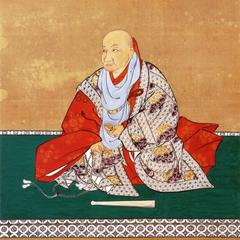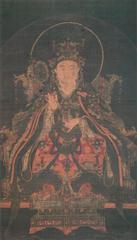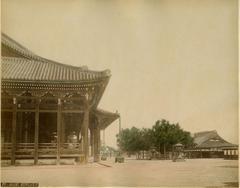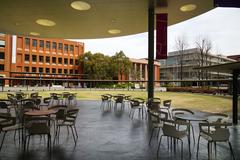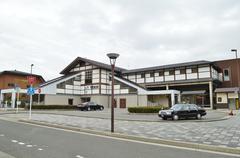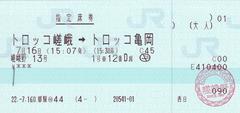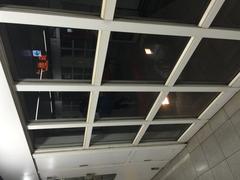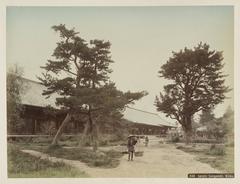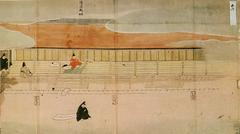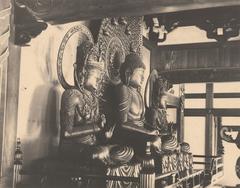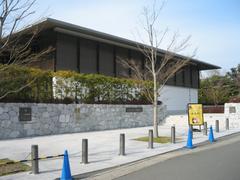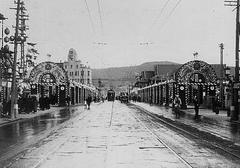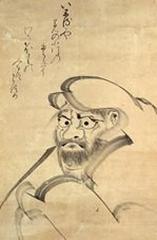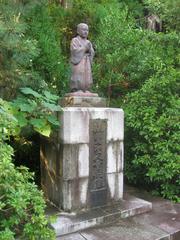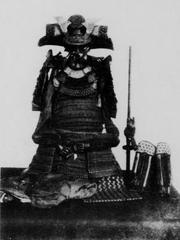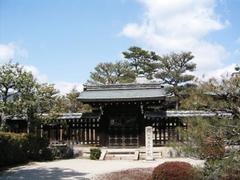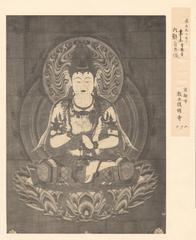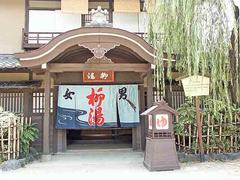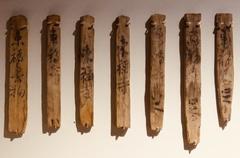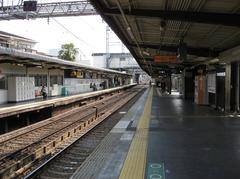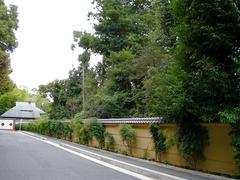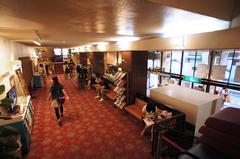
Rokkaku-Dō Kyoto: Visiting Hours, Tickets, and Historical Significance
Date: 03/07/2025
Introduction
Rokkaku-Dō, officially known as Chōhōji Temple, stands as one of Kyoto’s oldest and most culturally significant Buddhist temples. Its distinctive hexagonal main hall is an architectural rarity, symbolizing harmony and balance in Buddhist cosmology. Established in 587 CE and traditionally attributed to Prince Shōtoku, a pivotal figure in Japan’s adoption of Buddhism, Rokkaku-Dō offers a unique blend of spiritual depth, architectural intrigue, and artistic heritage. The temple is also recognized as the birthplace of Ikebana, the Japanese art of flower arrangement, with the Ikenobō School—the oldest Ikebana institution—still headquartered here (TrampinTrip; Kanpai Japan; Ikenobo Ikebana Official Site).
This guide provides a comprehensive overview of Rokkaku-Dō, including its history, visiting hours, ticketing, accessibility, cultural significance, and practical travel tips for making the most of your visit to this iconic Kyoto historical site (Japan Experience).
Table of Contents
- Rokkaku-Dō at a Glance: Quick Facts
- Historical Overview and Cultural Heritage
- Architectural Highlights: The Hexagonal Main Hall
- The “Navel Stone” and Symbolic Center of Kyoto
- Ikebana: Birthplace and Living Tradition
- Layout, Gardens, and Notable Features
- Visiting Information: Hours, Tickets, and Accessibility
- Rituals, Events, and Etiquette
- Nearby Attractions and Suggested Itineraries
- Frequently Asked Questions (FAQs)
- Summary and Planning Your Visit
- References
Rokkaku-Dō at a Glance: Quick Facts
- Location: 248 Donomaecho, Karasuma-dori Rokkaku-sagaru, Nakagyo-ku, Kyoto
- Nearest Stations: Karasuma Oike (Subway Karasuma and Tozai Lines), Shijo (Karasuma Line), Karasuma (Hankyu Kyoto Line)
- Opening Hours: Daily, 6:00 AM – 5:00 PM (may vary during special events)
- Admission: Free (donations welcome; some events/workshops may require a fee)
- Accessibility: Flat, paved grounds; main hall interior has steps; assistance available
- Languages: Pamphlets in English, Chinese, Korean; basic English spoken
Historical Overview and Cultural Heritage
Founded in 587 CE by Prince Shōtoku, Rokkaku-Dō has played a key role in the spread of Buddhism in Japan (TrampinTrip). The temple is dedicated to Yakushi Nyorai, the Buddha of Healing, and is noted for its enduring resilience through fires, wars, and urban development. The current main hall dates to the late Edo period, rebuilt after previous structures were lost to fire (Japan Experience).
Culturally, Rokkaku-Dō is renowned as the birthplace of Ikebana. During the Muromachi period (1336–1573), the temple’s resident priests developed flower-arranging rituals that became the cornerstone of the Ikenobō school—now a global authority in the art (Kanpai Japan; Ikenobo Ikebana Official Site).
Architectural Highlights: The Hexagonal Main Hall
Rokkaku-Dō derives its popular name—meaning “hexagon hall”—from the rare six-sided structure of its main building. The hexagonal design is symbolic of the six elements in Buddhist cosmology (earth, water, fire, wind, space, and consciousness) and the six senses, reflecting a harmony of physical and spiritual realms (Japan Experience; Kanpai Japan).
The double-roofed main hall, reconstructed in the 19th century, is topped with traditional tiles and gently curving eaves. Inside, it houses a revered statue of Nyoirin Kannon (Bodhisattva of Compassion), believed to have been enshrined by Prince Shōtoku (Zenkyoen). Worship is conducted from outside the main hall, in accordance with temple tradition.
The “Navel Stone” and Symbolic Center of Kyoto
An intriguing feature of Rokkaku-Dō is the Heso-ishi (“navel stone”), believed to mark Kyoto’s geographic and spiritual center. According to legend, Kyoto’s ancient grid was designed with Rokkaku-Dō as its axis, further establishing the temple’s importance in the city’s cultural landscape (Medium; Travel Around Japan). The stone is easily accessible within the compact temple grounds and remains a point of quiet reflection.
Ikebana: Birthplace and Living Tradition
Rokkaku-Dō’s international fame stems from its role as the birthplace of Ikebana. The Ikenobō family, temple priests for generations, developed the earliest formalized flower-arranging techniques here. Today, the adjacent Ikenobō headquarters and museum provide insights into the art’s history and contemporary practice. Ikebana workshops and seasonal exhibitions are occasionally held, offering visitors a rare opportunity to engage with this living tradition (Ikenobo Ikebana Official Site; Seasonal Japanese Garden).
Layout, Gardens, and Notable Features
Despite its location in bustling downtown Kyoto, Rokkaku-Dō offers a tranquil oasis. Features include:
- Serene gardens with willow trees, koi pond, and seasonal flowers
- Stone lanterns and statues, including Jizō Bodhisattva figures adorned with red bibs
- Small Shinto sub-shrines with ema (prayer plaques)
- Chozuya (water font) for ritual purification
The harmonious integration of Buddhist and Shinto elements reflects the syncretic nature of Japanese spirituality (Japan Experience; Kyoto Kanko Net).
Visiting Information: Hours, Tickets, and Accessibility
- Visiting Hours: 6:00 AM – 5:00 PM daily (hours may vary during festivals or major events)
- Admission: Free (no ticket required). Donations and fees for special exhibitions or workshops are clearly posted.
- Accessibility: Temple grounds are flat and paved; main hall interior has steps. Wheelchair users can access most outdoor areas. Restrooms and vending machines are available near the entrance.
- Getting There: Short walks from Karasuma Oike, Shijo, or Karasuma stations. Multiple city bus routes serve the area.
Rituals, Events, and Etiquette
- Daily Rituals: Monks perform chanting and altar maintenance; visitors may observe respectfully.
- Ikebana Demonstrations: Check the Ikenobō website for workshop and event schedules.
- Special Ceremonies: The Setsubun festival (February), Obon, and Higan are marked by unique rituals and lantern displays.
- Etiquette:
- Maintain quiet and respectful behavior.
- Follow photography guidelines—generally allowed outdoors, but not inside the main hall or during ceremonies.
- Dress modestly; remove shoes if entering tatami-matted rooms.
- Smoking is prohibited throughout the grounds.
Nearby Attractions and Suggested Itineraries
Rokkaku-Dō’s central location makes it ideal for combining with:
- Nishiki Market: Kyoto’s lively food market, just a short walk away.
- Teramachi and Shinkyogoku Shopping Arcades: For souvenirs and local crafts.
- Kyoto International Manga Museum: A must for manga fans.
- Nijo Castle: UNESCO World Heritage site, a brief subway ride away.
Consider exploring the Ikenobō Kaikan for deeper Ikebana experiences.
Frequently Asked Questions (FAQs)
Q: What are Rokkaku-Dō’s visiting hours?
A: Open daily from 6:00 AM to 5:00 PM, with potential variations during special events or holidays.
Q: Is there an admission fee?
A: Admission to the temple grounds is free; donations are welcome. Fees apply for certain exhibitions or workshops.
Q: Can I enter the main hall?
A: Entry into the main hall is not permitted; worship is conducted from outside.
Q: Is the temple wheelchair accessible?
A: The grounds are mostly accessible, though some areas have steps. Assistance is available as needed.
Q: Are tours or Ikebana workshops available?
A: While regular guided tours are not offered, Ikebana workshops and special demonstrations are held at the Ikenobō headquarters. Advance reservations may be required.
Q: Can I take photos?
A: Photography is allowed outdoors but is restricted inside the main hall and during ceremonies.
Summary and Planning Your Visit
Rokkaku-Dō embodies Kyoto’s spiritual and artistic legacy, offering visitors a chance to experience a serene oasis amidst the urban landscape. Its architectural distinction, rich Ikebana heritage, and accessible location make it an essential stop for anyone interested in Japanese culture or Buddhist history. For the best experience, visit in the early morning or during the cherry blossom and autumn foliage seasons, and check for special events or Ikebana exhibitions via the official site.
Download the Audiala app for self-guided tours, detailed maps, and up-to-date visitor information. For more inspiration, explore our articles on Kyoto’s Top Temples and Japanese Traditional Arts.
References
- Discover Rokkaku-Dō: Kyoto’s Historic Hexagonal Temple You Can’t Miss, 2025, TrampinTrip (https://trampintrip.com/en/rokkaku-do)
- Architectural Features and Grounds, 2025, Japan Experience (https://www.japan-experience.com/all-about-japan/kyoto/temples-shrines/rokkakudo)
- Rokkaku-dō: A Guide to Visiting Kyoto’s Historic Temple and Ikebana Heritage, 2025, Kyoto City Official Travel Guide & Ikenobō Ikebana Official Site (https://kyoto.travel/en/shrine_temple/133, https://www.ikenobo.jp/english/)
- Rokkaku-Dō Visiting Hours, Tickets, and Guide to Kyoto’s Historic Hexagonal Temple, 2025, Ikenobō Official Website (https://www.ikenobo.jp/english/)
- Review: Rokkaku-dō, the Temple Where Kyoto’s Streets Begin, 2023, Medium (https://medium.com/@yinlewang/review-rokkaku-d%C5%8D-the-temple-where-kyotos-streets-begin-81618876e0cc)


